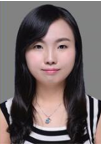An Introduction to the Design Culture
Abstract: 
Abstract: This paper discusses the design culture to improve the user experience. Based on the epistemology and ontology methods, grasping the main contradiction of design culture, it is proposed that culture is the source of design culture, the design is the theory of designing cultural flow, and discusses the contents of design, culture, design culture and the functions of design culture. The basic category, theoretical system framework, main role, and development trend of design culture are put forward. The design culture must conform to the needs of social development and transformation such as new retail, promote cultural consciousness, accelerate design innovation, establish a big design concept; establish a theoretical system of design culture, create a discipline of design culture. To achieve cultural orientation, policy measures, priority training, and industrial goals. Our discussion lays a foundation for the study of design culture and the application of design in new eras such as the new retail.
Keywords: user experience, design, culture, cloud design, design culture, design education
Author: Li Jiayang
Co-author(s): LU JIXIANG, WANG PING,LU CHANGDE, WANG YANWEI
Job: Associate researcher
Organization: Northwestern Polytechnical University
Area of Expertise: TRIZ education, TRIZ competition
About the Author(s)
LU, JIXIANG
Work:
• Assistant Researcher, Northwestern Polytechnical University, School of Mechanical and Electrical Engineering, Department of Industrial Design, China
• Visiting Scholar, Computer Engineering, University of Houston, USA
• Visiting Scholar (Short time) Rice University, USA
Academic organization:
• China Innovation Design Industry Strategic Alliance, Assistant Director, Big Data Expert Committee
• China Innovation Design Industry Strategic Alliance, Member, Human-Computer Interaction Expert Committee
• Standing Director, Silk Road Innovation Design Industry Alliance, Deputy Director, Big Data Expert Committee
• Member, UXPA(China); Member of IEEE;
Education:
• Postdoctoral, Zhejiang University, School of Computer Science and Technology, China,
Major: Design Science
• Ph.D., Northwestern Polytechnical University, China, Major: Computer Aided Industrial Design
• Master, Northwestern Polytechnical University, China, Major: Computer Aided Industrial Design
• Master, Xi'an Jiaotong University, China, Major: Applied Economics(E-financial)
• Bachelor, Northwestern Polytechnical University, China, Major: Communication Engineering
Professional research direction:
Industrial design; innovative design; user experience design; Big data product-service design; cloud design; intelligent design and human-computer interaction; human factors engineering; signal processing. Published more than ten articles on “Cloud Design” papers at China and abroad, and published many core journal articles such as “Re-discussion on Cloud Design.” Write and participate in some monographs. In charge and participated in many national research projects such as the National “863” Program, the National Science and Technology Support Program, the China Academy of Engineering Major Consulting Project, the China Academy of Engineering Key Project, the Provincial and Municipal Natural and Social Science Fund, and the Enterprise Cooperation P.
Category:
5. Blockchain – applications with TRIZ innovations